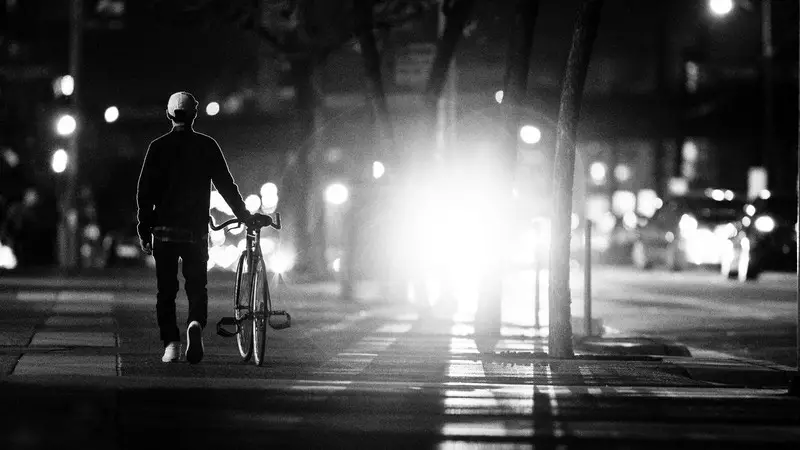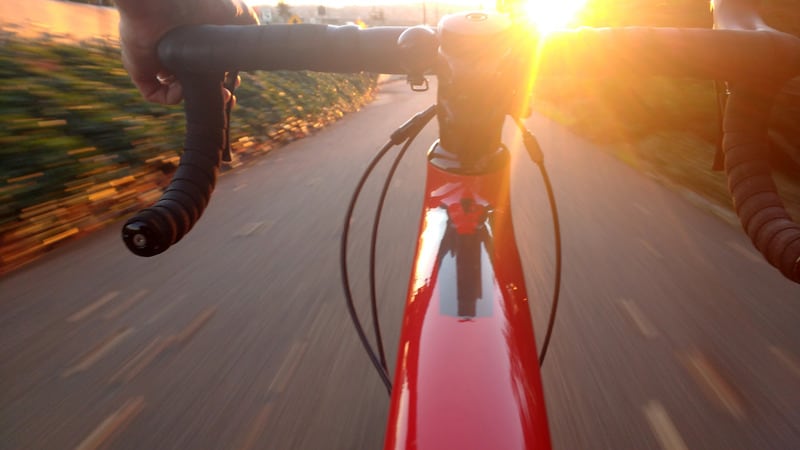
Commuting by bike is an environmentally-friendly habit you’ll come to enjoy. However, safety on the road should be paramount. While most commercial bikes come fitted with reflectors, adding lights is up to you – but you should not overlook it!
For bike commuting in a well-lit urban area, 100 lumens is enough during the daytime, but you might need up to 200 lumens in the dark. If your commute takes you outside of the city, consider more powerful LED lights, up to 400-600 lumens. Brighter lights than these can dazzle other road users.
Picking the right number of lumens is essential for safety on the road. Find out more below.
What Are Lumens?
In a nutshell, lumens are a unit of measure used to describe the intensity of the total visible light created by a light source or bulb. While lumens measure the brightness of a particular bulb, Watts measure the level of energy that bulb uses. However, thanks to today’s technological advancements, the energy used by a lamp do not correspond to the light emitted.
For example, in the case of LED lights, they are so energy efficient that you will need to pick them based on their brightness (lumens) rather than on the energy they use. This is essential to see the path in front of you and be seen by others.
If you still prefer to shop for your LED bike lights based on Watts, here is a quick conversion table to use:
| Lumens | LED Watts |
| 375 lm | 6.23 W |
| 600 lm | 10 W |
| 900 lm | 15 W |
| 1125 lm | 18.75 W |
How Many Lumens Will You Need?
The lumens- and therefore the brightness – you will need for your bike lights depend on several factors, including the type of commuting you will need to undertake. During autumn or the winter months, it is likely for you to cycle back home after sunset, and you need to tackle dark mornings too.
Additionally, if you live within a smaller city or town, the commute might take you outside of the centre, through roads that might not be as well lit such as country lanes. The table below will give you an indication of the lumens you need for your bike commuting.
| Situation | Lumens |
| Daytime Cycling | 100+ |
| Urban Cycling (well-lit) | 50-200+ |
| Rural Cycling (not as well-lit) | 400-600 |
| Trails and Mountain Biking | 600-1000 |
The fewer lumens your bike light has, the more important it becomes for it to have a flashing mode. This will allow you to catch the attention of other drivers, even with lights that are not so bright. Additionally, lower-lumens lights and flashing lights will use less of the device’s battery which, in turn, will last longer.
Types of Lights and Lumens
There are two categories of bike lights to consider when shopping for the right lumens:
Lights to see
These are the lights fit at the front of your bike, and they usually emit white light – either flashing or continuous. You will need them to illuminate the road in front of your and identify any possible obstacle. Therefore, they are usually much brighter than the ones at the rear, with lumens ranging between 100 and 200 for urban travels. However, if you are planning to cycle through a rural area, these lights can have as much as 1,600 lumens.
Lights to be seen
The lights to be seen are the ones located at the rear of your bike, and they are often orange or amber. These lights don’t need to be as bright as the front ones since they are designed to let other drivers and cyclists know about your presence on the road.
You can learn more about the difference between the two types of lights in the video below:
Regulations Regarding Bike Lights
It is also worth considering the regulations and laws regarding the standards for bike lights.
Most commercial bikes on the market today will come with integrated reflectors, but implementing lights is up to the rider. However, according to the Road Vehicles Lighting Regulations 1989, at night time, after sunset, or in situations of poor visibility, they are mandatory.
To conform with BS6102-3, any cycle that travels after sunset and in poor visibility should be equipped with:
- A white front light
- A red rear light
- A rear reflector
- Yellow (or amber) pedal reflectors, fitted at the rear and front of each pedal
While these are not necessary during the daytime, you can’t guarantee that you won’t ever travel after sunset or in situations of rain or fog. Therefore, it is recommendable to fit your bike with all of these to be ready in case of need.
Be Conscious of Others on the Road
Undoubtedly, the brighter your bike light is, the further and clearer you will be able to see. However, bright flashing lights can dazzle other drivers, creating a safety hazard, especially during nighttime. While bike lights have become increasingly more affordable and accessible to any cyclist, it is essential to understand the importance of other road users’ comfort and safety.
While you might still be able to buy a 1,600 lumen light for your bike, it does not mean that this choice is the right one for cycling through the centre of a well-lit city. Generally, riders will opt for 200 to 400 lumens for their front light, while the rear one can remain around 50 to 100 lumens. Since you will also be able to rely on reflectors, those indications will ensure both yours and others’ safety.
Factors to Consider When Selecting Lumens

Unfortunately, there is no one-formula-fits-all when it comes down to shopping for your bike lights. While local regulations tell us that they are necessary after darkness and in poor visibility, they are a smart addition during summer. Therefore, taking into consideration the factors below can help you identify the right light for you.
How Do You Use Your Bike?
Of course, you need lights that protect you during your early morning or late-night commutes to and from work. However, you might be using your bike for other means as well, like weekends trips and rural outings.
While you might find a 200-lumens light appropriate during those commutes in a well-lit city centre, they might not boast the same level of safety in other environments. Understanding what you will be using your bike for can give you a better indication of the lumens you will need.
Visibility Conditions and Daylight Hours
Depending on your work shifts and the location of your workplace, you might not necessarily need to have the brightest lights. For standard 9-to-5 work shifts, you might opt to have up to 200 lumens on your front bike for those winter afternoons when you will be cycling back after dark.
Length of the Commute
Depending on how long you are commuting for, you might find yourself cycling in the dark often or not as much. Determining your usual route and commute length can help you figure out whether you need brighter lights to illuminate a not so well-lit road.
Consider Helmet Lights and Reflective Ankle Bands
Aside from the rear light, front light, and reflectors, you could implement other safety measures such as Helmet Lights and Reflective Ankle Bands. These two devices allow you to reduce the brightness of the lights installed. This simple addition guarantees you an even higher level of safety on the road while protecting other road users from being dazzled by lights that are too bright.
Conclusion
Generally, 100 to 200 lumens for the front light of your bike are enough to allow you to travel in all safety. Regarding the rear light, anything between 50 and 100 lumens will be sufficient to guarantee security while ensuring the comfort of other road users.
Since city centres are usually well-lit, you will only need them in case of poor visibility. However, understanding the length of your commute and the environment around you can help you make a more informed choice.

